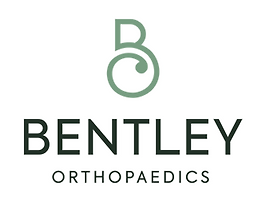Central Auckland, East Auckland, North Auckland, South Auckland, West Auckland > Private Hospitals & Specialists >
Jarome Bentley - Orthopaedic Surgeon
Private Service, Orthopaedics
Description
Mr. Bentley is an orthopaedic surgeon who works in private and public practice. He completed his training in New Zealand before spending three years on fellowship in Australia and the UK.
Through his six fellowships, Mr. Bentley has acquired a broad set of skills to treat a variety of orthopaedic conditions. He has an interest in trauma, musculoskeletal infection as well as hip and knee disorders. Mr. Bentley has experience with navigation and robot assisted surgery and is passionate about integrating the latest technology into his orthopaedic practice.
Mr. Bentley is proud to be an orthopaedic surgeon at Counties Manukau DHB. He oversees the combined orthopaedic - infectious disease meetings, actively contributes to the orthoplastics service and accepts complex trauma referrals from within New Zealand and the Pacific Islands.
Services offered:
- Hip replacement surgery including revision
- Gluteal tendon repair / reconstruction
- Knee replacement surgery – total, partial, patellofemoral, revision
- Knee preservation (realignment) surgery – high tibial osteotomy, distal femoral osteotomy
- Knee arthroscopy including meniscal repair
- Adult patella stabilisation surgery
- Robot assisted hip and knee replacement surgery
- Trauma fixation of the upper and lower limb excluding hands and feet
- Nonunion and malunion surgery of the upper and lower limb excluding hands and feet
- Pelvic and acetabular surgery
- Tendon repairs - distal biceps, pectoralis major, hamstring avulsions < 3 weeks; tendon achilles
- Metalware removal
Consultants
-

Mr Jarome Bentley
Orthopaedic Surgeon
Ages
Adult / Pakeke, Older adult / Kaumātua
How do I access this service?
Referral, Make an appointment
Referral Expectations
You need to bring with you to your first appointment:
Fees and Charges Categorisation
Fees apply
Fees and Charges Description
- Southern Cross Health Insurance Affiliated Provider for Consultations.
- NIB First Choice provider
Procedures / Treatments
Service types: Joint replacement, Knee replacement, Total knee replacement.
Service types: Joint replacement, Knee replacement, Total knee replacement.
Service types: Joint replacement, Knee replacement, Total knee replacement.
A large number of orthopaedic procedures on joints are performed using an arthroscope, where a fibre optic telescope is used to look inside the joint. Through this type of keyhole surgery, fine instruments can be introduced through small incisions (portals) to allow surgery to be performed without the need for large cuts. This allows many procedures to be performed as a day stay and allows quicker return to normal function of the joint. Arthroscopic surgery is less painful than open surgery and decreases the risk of healing problems. Arthroscopy allows access to parts of the joints which can not be accessed by other types of surgery.
A large number of orthopaedic procedures on joints are performed using an arthroscope, where a fibre optic telescope is used to look inside the joint. Through this type of keyhole surgery, fine instruments can be introduced through small incisions (portals) to allow surgery to be performed without the need for large cuts. This allows many procedures to be performed as a day stay and allows quicker return to normal function of the joint. Arthroscopic surgery is less painful than open surgery and decreases the risk of healing problems. Arthroscopy allows access to parts of the joints which can not be accessed by other types of surgery.
A large number of orthopaedic procedures on joints are performed using an arthroscope, where a fibre optic telescope is used to look inside the joint. Through this type of keyhole surgery, fine instruments can be introduced through small incisions (portals) to allow surgery to be performed without the need for large cuts. This allows many procedures to be performed as a day stay and allows quicker return to normal function of the joint.
Arthroscopic surgery is less painful than open surgery and decreases the risk of healing problems. Arthroscopy allows access to parts of the joints which can not be accessed by other types of surgery.
Service types: Knee replacement, Joint replacement, Hip replacement.
Service types: Knee replacement, Joint replacement, Hip replacement.
Service types: Knee replacement, Joint replacement, Hip replacement.
This is a surgical procedure performed on a knee joint that has become painful and/or impaired because of disease, injury or wear and tear. In total knee replacement, artificial materials (metal and plastic) are used to replace the following damaged surfaces within the knee joint: the end of the thigh bone (femur) the end of the shin bone (tibia) the back of the kneecap (patella) This operation is a major procedure which requires you to be in hospital for several days and will be followed by a significant period of rehabilitation. Occasionally blood transfusions are required; if you have some concerns raise this with your surgeon during consultation. For more information about total knee replacement please click here.
This is a surgical procedure performed on a knee joint that has become painful and/or impaired because of disease, injury or wear and tear. In total knee replacement, artificial materials (metal and plastic) are used to replace the following damaged surfaces within the knee joint: the end of the thigh bone (femur) the end of the shin bone (tibia) the back of the kneecap (patella) This operation is a major procedure which requires you to be in hospital for several days and will be followed by a significant period of rehabilitation. Occasionally blood transfusions are required; if you have some concerns raise this with your surgeon during consultation. For more information about total knee replacement please click here.
This is a surgical procedure performed on a knee joint that has become painful and/or impaired because of disease, injury or wear and tear.
In total knee replacement, artificial materials (metal and plastic) are used to replace the following damaged surfaces within the knee joint:
- the end of the thigh bone (femur)
- the end of the shin bone (tibia)
- the back of the kneecap (patella)
This operation is a major procedure which requires you to be in hospital for several days and will be followed by a significant period of rehabilitation.
Occasionally blood transfusions are required; if you have some concerns raise this with your surgeon during consultation.
For more information about total knee replacement please click here.
This procedure is used when osteoarthritic damage to the cartilage on one side of the knee has caused the angle of the knee joint to change so that most of the body's weight is borne by the affected side, adding to the wear on that side. High Tibial Osteotomy involves reshaping and realignment of the bone so that weight becomes more evenly distributed between the inside and outside of the knee, thereby reducing the workload on the damaged side. You will probably have to stay in hospital for several days after surgery followed by up to 6 months rehabilitation. For more information about osteotomy please click here.
This procedure is used when osteoarthritic damage to the cartilage on one side of the knee has caused the angle of the knee joint to change so that most of the body's weight is borne by the affected side, adding to the wear on that side. High Tibial Osteotomy involves reshaping and realignment of the bone so that weight becomes more evenly distributed between the inside and outside of the knee, thereby reducing the workload on the damaged side. You will probably have to stay in hospital for several days after surgery followed by up to 6 months rehabilitation. For more information about osteotomy please click here.
This procedure is used when osteoarthritic damage to the cartilage on one side of the knee has caused the angle of the knee joint to change so that most of the body's weight is borne by the affected side, adding to the wear on that side.
High Tibial Osteotomy involves reshaping and realignment of the bone so that weight becomes more evenly distributed between the inside and outside of the knee, thereby reducing the workload on the damaged side.
You will probably have to stay in hospital for several days after surgery followed by up to 6 months rehabilitation.
For more information about osteotomy please click here.
Service types: Orthopaedic deformities.
Service types: Orthopaedic deformities.
Service types: Orthopaedic deformities.
Public Transport
The Auckland Transport website is a good resource to plan your public transport options.
Website
Contact Details
Franklin Specialist Suites, 149 Manukau Road, Pukekohe, Auckland
South Auckland
-
Phone
(09) 534 0290
Healthlink EDI
jbentley
Email
Website
Ormiston Hospital Specialist Centre & Consulting Suites, 125 Ormiston Road, Flat Bush, Auckland
South Auckland
-
Phone
(09) 534 0290
Healthlink EDI
jbentley
Email
Website
Ascot Office Park, 93-95 Ascot Avenue, Greenlane, Auckland
Central Auckland
-
Phone
(09) 534 0290
Healthlink EDI
jbentley
Email
Website
Was this page helpful?
This page was last updated at 9:02AM on February 24, 2025. This information is reviewed and edited by Jarome Bentley - Orthopaedic Surgeon.

